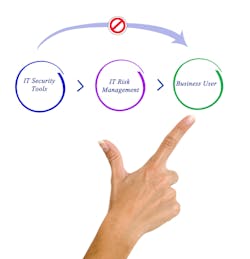The Skinny
- Temporary Fixes, Permanent Risks: Most organizations rely on compensating controls to delay patching but rarely test whether they are still effective, turning stopgaps into silent liabilities.
- Validate or Gamble: If you don’t actively verify that a control still mitigates real-world threats, you’re not managing risk, you’re just assuming it’s gone.
- Mature Programs Don’t Hope—They Measure: Leading security teams treat compensating controls as auditable, validated components tied to assets, vulnerabilities, and risk scoring—not forgotten band-aids.
Most enterprise security teams rely on compensating controls. And for good reasons, patching every vulnerability on every asset is a fantasy. But here’s the problem: once a control goes in, no one checks if it’s still doing its job. Over time, compensating controls become crutches. And crutches break. It’s time we get honest about what these controls can and can’t do for vulnerability management.
What Compensating Controls Are (and aren’t)
Compensating controls are alternative safeguards. You can’t patch a vulnerability, so you deploy something else to reduce the risk. EDR blocking a payload. MFA stopping credential theft. Firewall rules containing RCE attempts. However, unless you can demonstrate that control remains effective today against real-world threats, it’s merely a security placebo. And most organizations never validate that part.
One example of this is a time when I was working with a Fortune 100 company. They told us they had ‘full coverage’ for a legacy app via firewall rules. A quick red team exercise proved otherwise in under an hour. The firewall hadn’t blocked that port in years. No one noticed.
When You Need Them and Why They Linger
Sometimes, a compensating control is your only short-term option. The system’s too critical to patch. The vendor doesn’t have a fix. The business won’t allow downtime. Fair. Yet, the problem lies in what happens next. That "temporary" workaround turns permanent. No one owns it. No one tests it. And no one remembers why it was deployed in the first place. That’s where the risk creeps in.
You Must Validate or You're Flying Blind
If you're using a control to justify deferring remediation, you need continuous evidence that it remains effective. That means active testing. Think breach-and-attack simulation. Think automated validation. Consider the red team's findings in relation to control coverage.
Validation isn’t a one-time box to check. It’s a repeatable process, conducted at a minimum of quarterly intervals. Mature organizations are tracking the efficacy of controls alongside vulnerabilities. If you're not doing that, your risk posture is fiction.
How It Fits into a Modern Vulnerability Management Program
In a unified vulnerability management platform, compensating controls are operationalized:
● They're documented with scope, coverage, and a validation schedule.
● They’re tied to assets and vulnerabilities.
● They influence severity scores and drive exception logic.
● Their status is auditable by GRC and governance teams.
This isn’t theory. Our customers, some of the most complex enterprises in the world, utilize controls to gain breathing room without incurring security debt. But it only works when validation and accountability are baked into the process.
Compensating Controls vs. Risk Prioritization
Not all unpatched vulnerabilities are equal. If you’ve got an EDR that blocks exploitation paths for dozens of RCEs, great, you can dial down the urgency on those. But you better be able to prove it. Controls don’t eliminate risk; they shift how you measure and manage it. And let’s be honest: compensating controls don’t reduce the total volume of work; they shift where the work happens. You’re trading patching for validation, documentation, and governance. That’s not easier. Just different.
The Big Mistakes
Here’s what we see kill compensating control strategies in the field:
● No inventory. You don’t know which controls cover what.
● No validation. You assume controls work, but haven’t tested.
● No time limits. Temporary becomes permanent by default.
● No prioritization model. You treat control-backed vulns the same as unprotected ones.
If that’s your program today, it’s not a strategy, it’s luck.
What Good Looks Like
A mature program treats compensating controls like first-class citizens:
● Controls are mapped to vulnerabilities.
● Their effect on risk scoring is tracked.
● There’s a validation cadence and owner.
● They’re part of remediation and exception workflows.
● When root causes become fixable, the control is retired.
Final Take
Compensating controls are a means, not an end. They’re temporary scaffolding, not permanent infrastructure. And like scaffolding, they need regular inspection; otherwise, they collapse under their weight. In vulnerability management, you either validate your controls or bet your security on hope. Guess which one wins.
About the Author

Scott Kuffer
Co-Founder & CPO/COO, Nucleus Security
Scott Kuffer is a co-founder, COO, and CPO of Nucleus, serving as a hands-on technical executive who builds and manages security software designed to optimize the vulnerability management process. Before founding Nucleus, Scott was a Security Engineer at Rampant Technologies, providing security, systems, and software engineering services to the Federal Government. Scott holds a Master’s of Cybersecurity Management and Policy from Embry-Riddle Aeronautical University.

